From understanding customer issues to analyzing agent performance, voice analytics are crucial to operating an efficient, modern contact center.
From understanding customer issues to analyzing agent performance, voice analytics are crucial to operating an efficient, modern contact center.
But what exactly are call center voice analytics, and how can they be utilized to improve your contact center operations?
This blog post defines voice analytics and describes its potential benefits. Then, it walks through various use cases for voice analytics. Finally, it prescribes a framework for thinking through acquiring technology to improve your analytics.
Let's get started.
What is Call Center Voice Analytics?
Analytics is the process of "discovering, interpreting, and communicating significant patterns in data." In other words, analytics is the art of transforming raw data into usable metrics.
Call Center Voice Analytics, also known as Speech Analytics, is the process of transforming conversational data from voice interactions into meaningful metrics.
Typically, speech analytics software will utilize advanced computing techniques, like machine learning and natural language processing (NLP), to input all conversational data between agents and customers and output digestible metrics.
Voice analytics might include some of the following metrics:
- Average Handle Time
- Average Talk Time
- Average After-Call Work Rate
- Resolution Rate
- Repeat Caller Rate
- Intent Data
- Sentiment Data
- Custom Structured Data Reflecting Contents of Call
- Automated Summaries of Conversations
Real-time speech analytics enable contact center management to intimately understand how well their agents are servicing customers and accomplishing company objectives. In the next section, we break down the power of voice analytics for contact center management.
The Power of Voice Analytics
Voice analytics are to a contact center as the instrument panel is to a pilot.
With high-quality voice analytics, contact center management can keep their finger on the pulse of their organization. Below, we break down some of the use cases for live contact center analytics.
Use Cases for Voice Analytics
Quality Assurance and Performance Management
Voice analytics enable contact center management to understand the quality of the support its agents are providing. Analytics can help create a scorecard for agents, allowing management to see at a glance how agents are performing on a variety of metrics.
For example, a telcom company might need to weigh several variables when determining agents' performance. These variables might include average handle time, resolution rate, call back rate, and truck roll rate (the percentage of time a service truck is dispatched to a customer.) Voice analytics can compile all this data without manual intervention.
In addition, voice analytics can perform automated quality assurance work, like checking to determine if certain promos were offered, if policies around customer ID verification were followed, etc.
In short, voice analytics automates and simplifies quality assurance and performance management, while offering the ability for managers to gain visibility into a wide variety of metrics.
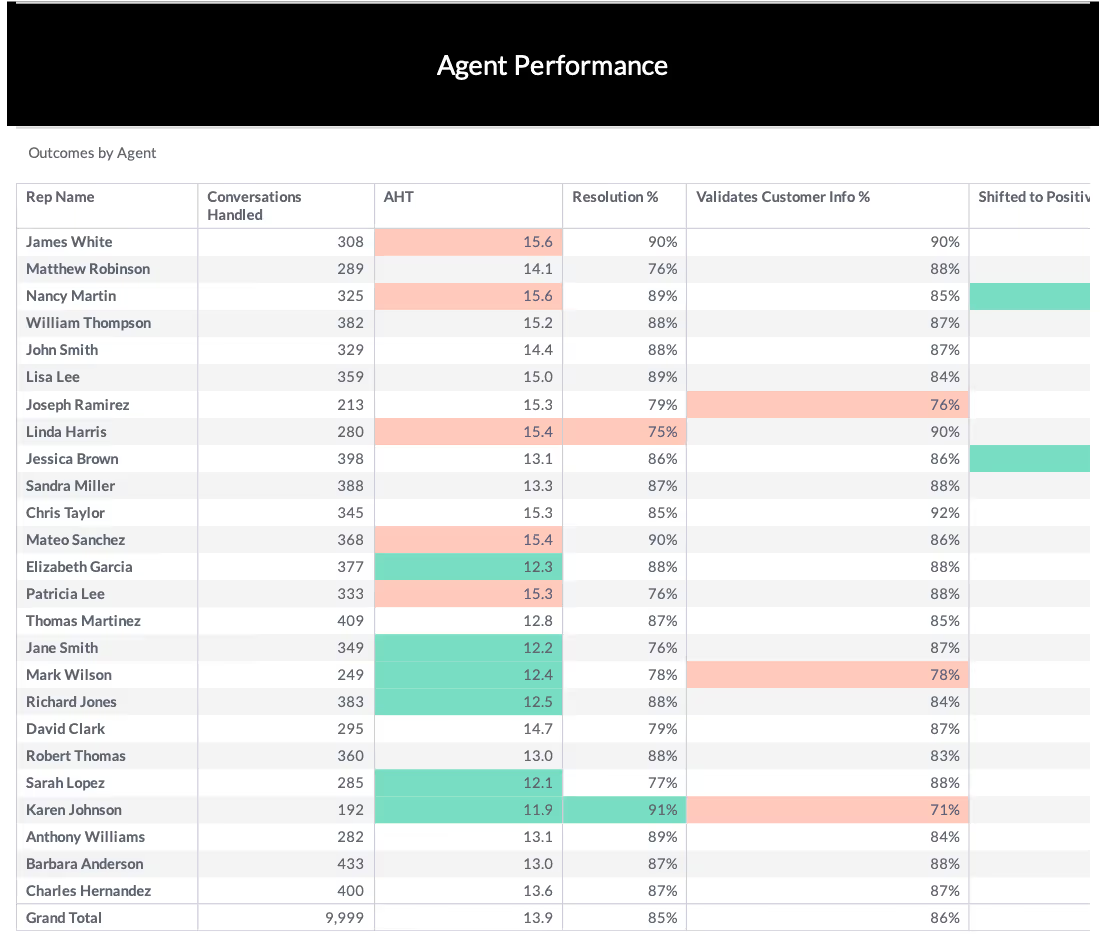
Compliance and Risk Management
Similar to the above, analytics on customer conversations can provide documentation for compliance and help companies manage risk.
For example, if a company is required by law to provide certain information for specific products (like a disclaimer for a financial product), voice analytics can provide evidence of agents' compliance.
In addition, analytics can serve as a powerful risk management tool. By creating flags that monitor automatically for likely fraud, potential discrimination, and more, a speech analytics tool can help companies proactively manage risk.
Analyze Contact Center Trends
Voice analytics can provide detailed information about customer issues, sentiment, satisfaction, and more by leveraging AI to analyze customer conversations.
By understanding exactly why customers are calling, companies can be proactive about resolving problems before they occur. In addition, contact centers might consider bolstering their bot flows to address common issues or creating automated internal processes to handle frequent requests more adeptly.
By utilizing the power of voice analytics, contact centers can identify trends as they occur and design intelligent interventions to improve customer experience.
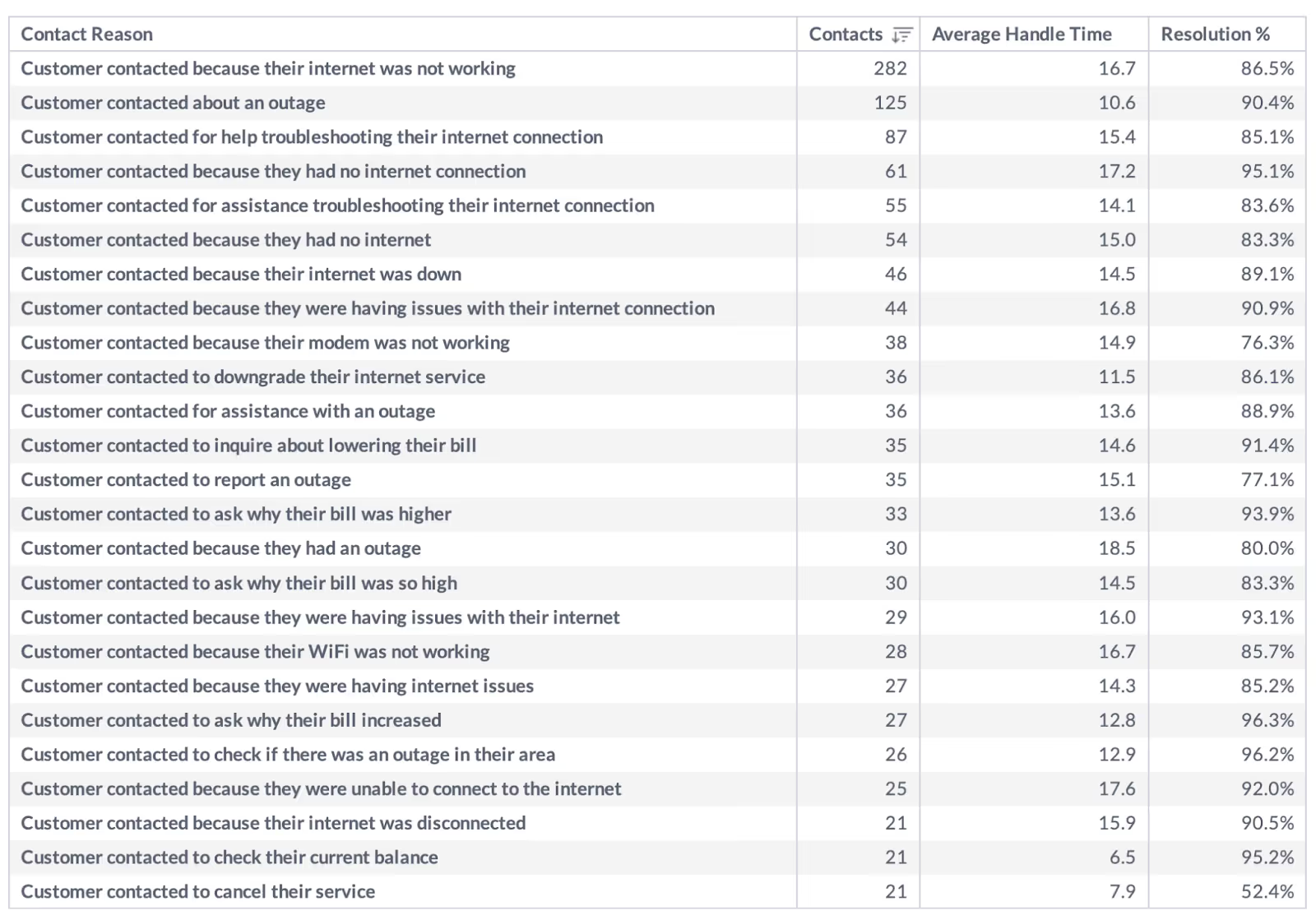
Identify and Reduce Churn
Voice analytics can do more than report simple metrics; it can also be configured to run complex operations, such as analyzing customer sentiment and intent and categorizing issues.
One of the most powerful ways to configure voice analytics is to leverage the various analyses it provides to automatically identify potential churn.
For example, suppose analysis demonstrates that customers most likely to churn are those who call at least three times in a week, demonstrate negative sentiment, and use profanity in at least one call. Voice analytics software can flag every case with these qualities so management can determine the best way to intervene and reduce potential churn.
Of course, in a real-world application, the analysis can be much more complex. But the power of voice analytics is that it helps to predict problems before they occur, so management can be proactive rather than reactive.
Automate After-Call Work
The best voice analytics software leverages the power of AI to automatically summarize customer interactions. With powerful automated summaries, contact center agents can significantly reduce the amount of after-call work needed to document interactions.
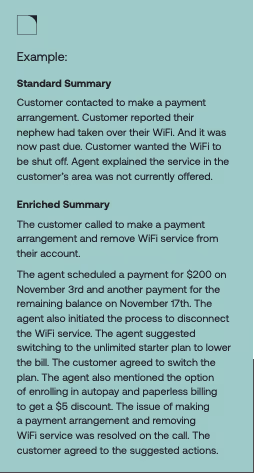
More, automated summaries can provide both structured and free text data. Structured data is standardized data, typically tabular with rows and columns, that clearly define data attributes. Best-in-class voice analytics software will automatically summarize call into defined, structured data that's relevant to operations (like competitors mentioned, whether a certain promo was offered, which products were discussed, etc.)
In addition, best-in-class voice analytics software can also provide informative free text summaries of conversations, enabling managers to quickly understand conversations without needing to dive through a transcript or rely on hurried agent notes.
With automated summaries, agents can significantly reduce the time spent on after-call work, and contact centers can receive enhanced summaries with the information they need to be effective.
How to Think About Voice Analytics Software
Voice analytics software is incredibly powerful. It provides management with a bird' s-eye view of the contact center's operations, quality assurance and performance management, helping to ensure compliance, aiding in identifying and reducing churn, and analyzing customer trends. Meanwhile, it can also improve agents' experiences by helping to automate summaries, enabling them to focus fully on the customer.
But how should contact centers think about purchasing the right voice analytics software for their company? Below, we highlight some key qualities speech analytics software should possess to provide as much insight as possible:
High-Quality Auto-Transcription
Low-accuracy transcription will hold back your voice analytics. Transcription is the core of any voice analytics solution. It is the technology that converts speech to text, so the software can accurately analyze the conversation.
But what is low accuracy?
The roughly 80% accuracy that many transcription solutions tout may sound like it is good enough. However, when 80% of the conversation is composed of simple words, it is the last 20% that holds the most critical, company-specific information you need to fill in the blanks.

If the solution you are considering is only capturing common words and phrases, you are going to miss out on the most valuable information, such as specific products, services, or policies mentioned, technical details, order or serial numbers, and more. With transcription, the real story is in the details. Make sure your solution captures the most important ones.
The right transcription solution will even let you identify and extract the most critical entities that you would like to glean from the transcript, such as order number, product name, date of transaction, dollar amount refunded/charged/credited, last four digits of account number, and competitor name.
Ability to Customize Insights & Dashboards
Most software offers cookie-cutter templates and insights that force companies to adhere to their definitions of what useful information to glean from customer conversations.
But every business is different, with unique use cases, nomenclature, and key issues to track.
The best software should enable your contact center to customize the valuable insights they want to glean from customer interactions.
Custom configurability should also extend to dashboards. Don't settle for pre-configured dashboards that limit your ability to understand what really matters. You should be able to customize dashboards to reflect the particular priorities and needs of management.
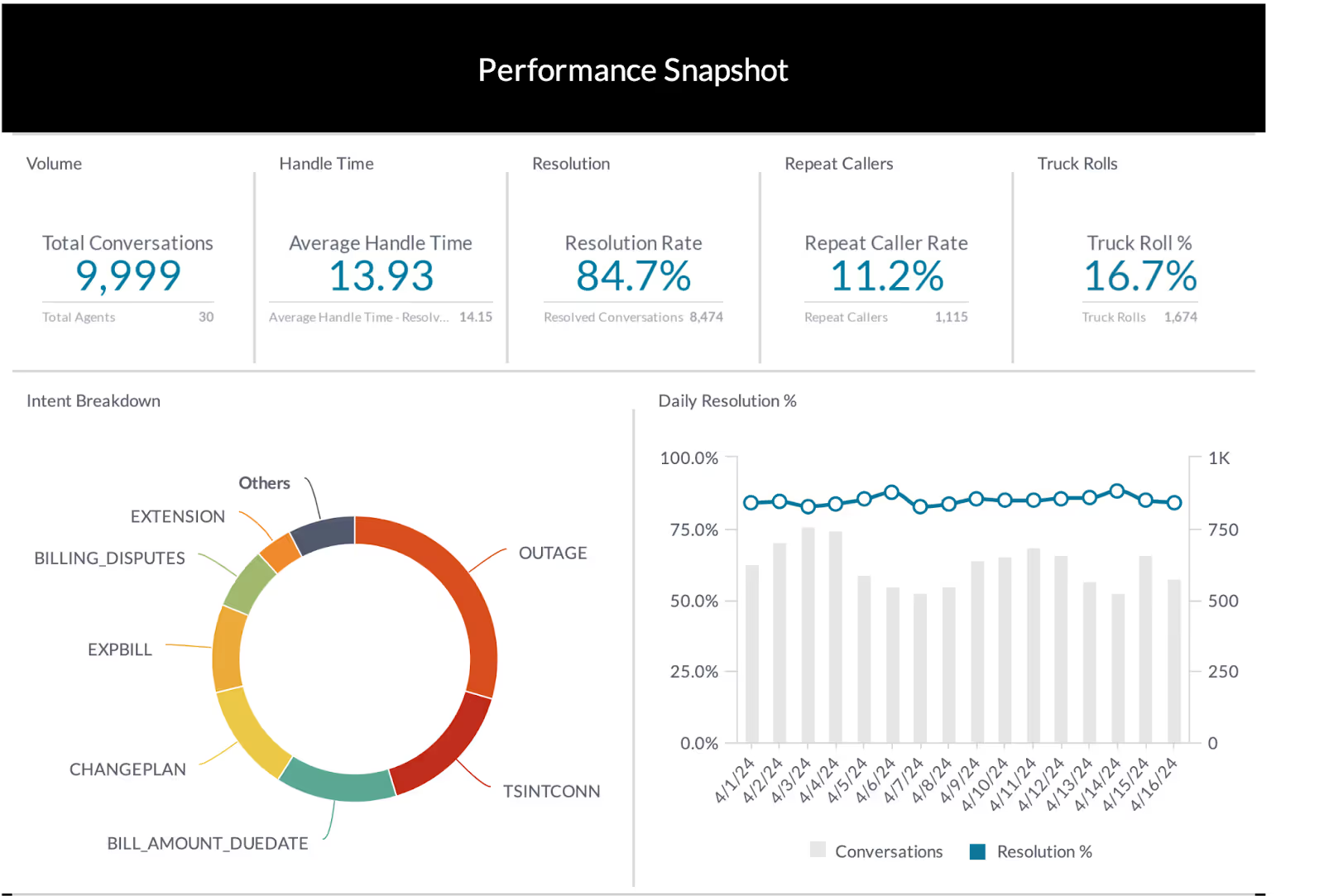
Generate Aggregated and Structured Data for Deep Analysis
Your summary data should guide corporate policymakers, provide insightful analytics, and be used to arm your agents. For it to truly do this, that data needs to be structured in the following categories for optimal use:

Integrations
Finally, any voice analytics software you choose should be able to integrate with the systems you use every day to access and manage customer data.
At a basic level, the software of your choice should be integrated with your CRM of choice, so it can automatically push automated summary data to the CRM without the need for additional agent actions.
In addition, the software should be compatible with your voice data, including audio via SIP call recording (SIPREC) protocol from contact center session border controllers (SBCs) or from live media stream services offered by major cloud telephony providers such as Amazon Connect (Kinesis), Twilio (Media Streams), and Genesys Cloud CX (Audiohook).
The right software should also be available both on-prem or as software-as-a-service.
In short, the best software is one that can mold itself to your infrastructure instead of forcing you to adapt to it.
Voice Analytics with ASAPP
Your conversation data is more valuable with ASAPP than any other solution. With our industry-leading structured data and enrichment capabilities, you will have more actionable insights and data discoverability than you thought possible - without any additional work for your agents. All this while dramatically reducing AHT, slashing ACW, and building a solid data foundation for all AI solutions to come.
ASAPP AutoSummary automates 100% of agents' after-call work. By combining human-readable and insights-ready summaries, AutoSummary can offload monotonous tasks for your agents and enable consistent, unbiased data across your contact center.
Beyond automatic and accurate summaries at scale, AutoSummary differentiates itself from other solutions by providing industry-leading capabilities around enrichment, structured data, configurable insights and dashboards, and flexible integrations.
In addition, ASAPP AutoTranscribe is the fastest and most accurate generative AI transcription solution purpose-built for CX. Only ASAPP delivers industry-leading speed and accuracy without compromising either.
Want more? Read our exhaustive buyer’s guide.
If you are sold on the need for the most powerful and configurable voice analytics software, then you need to know what to look for (and what to look out for) when evaluating solutions. Just “good enough” isn’t good enough when you are setting the foundation of intelligence for your CX organization.
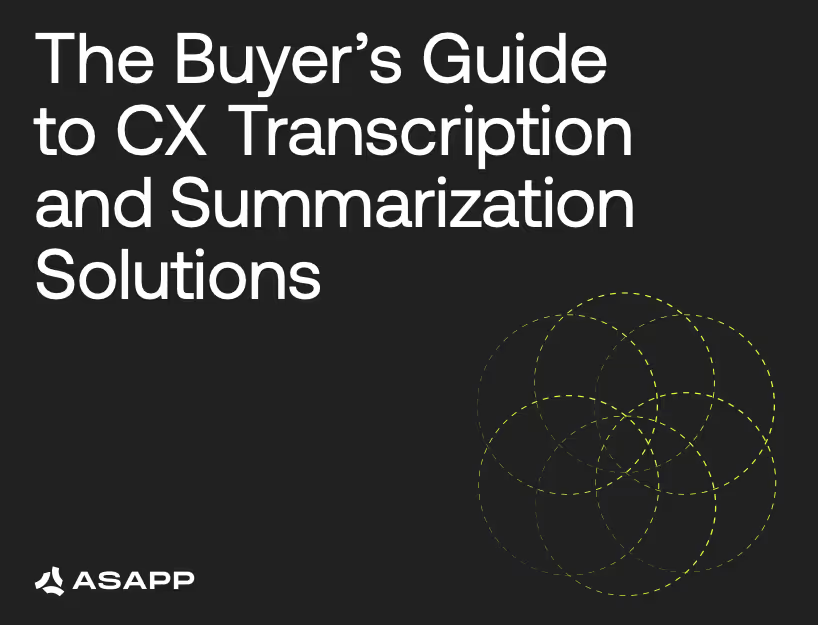
This guide will help you understand the features and capabilities you need to keep in mind when evaluating solutions and the reasons why they are mission-critical for your organization. Read on to ensure you aren’t adding to your technical debt and that you are building a solid foundation for your AI journey with the right solutions.
Read the guide here.



